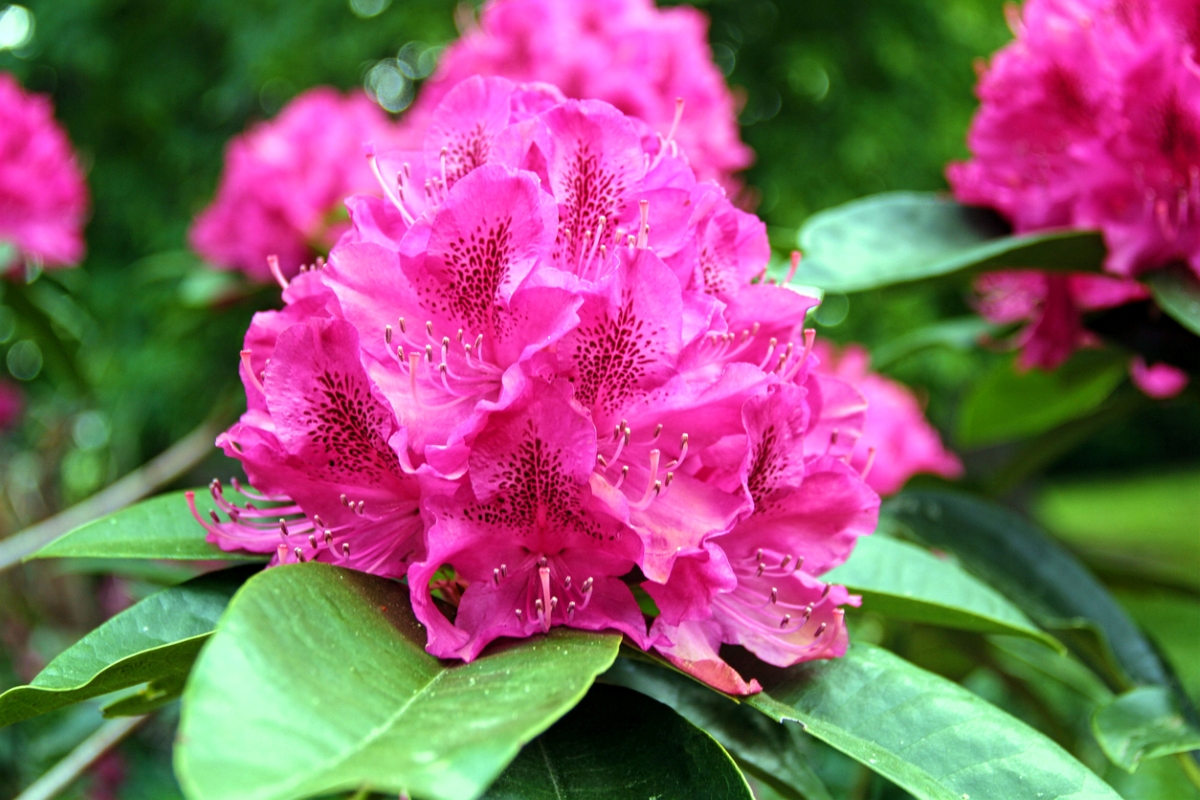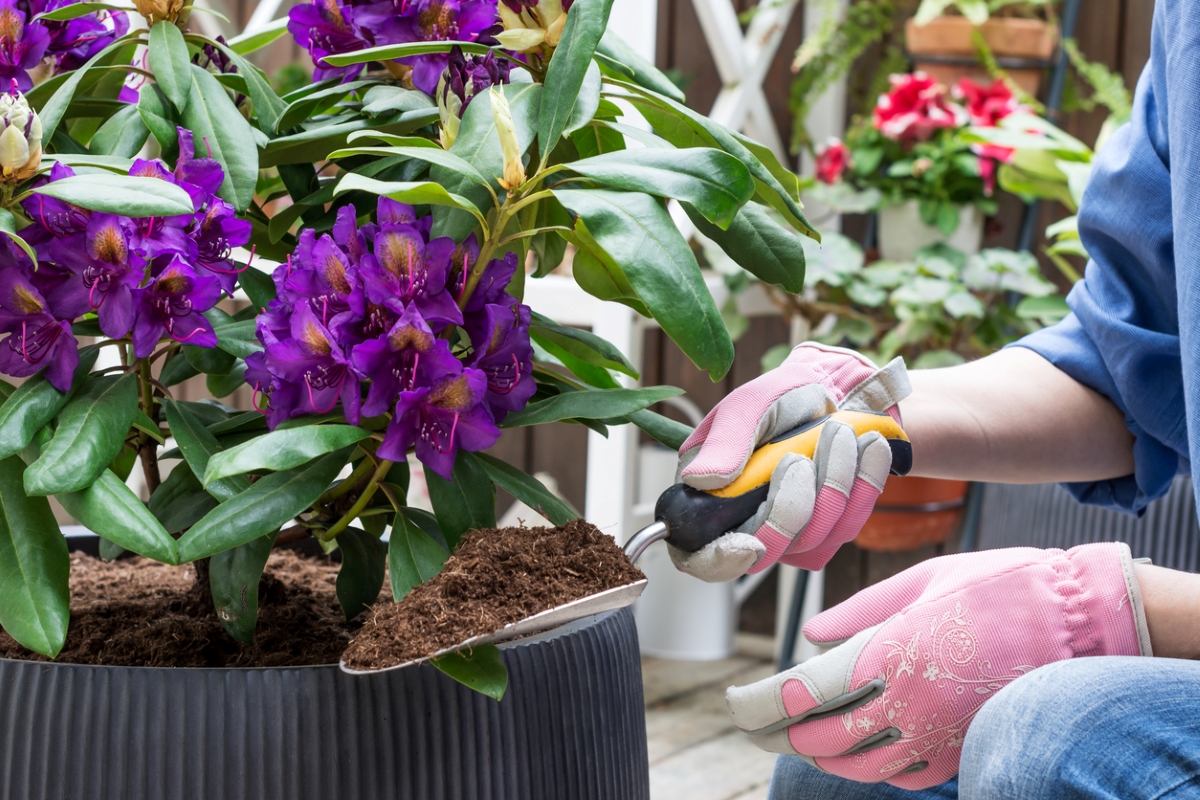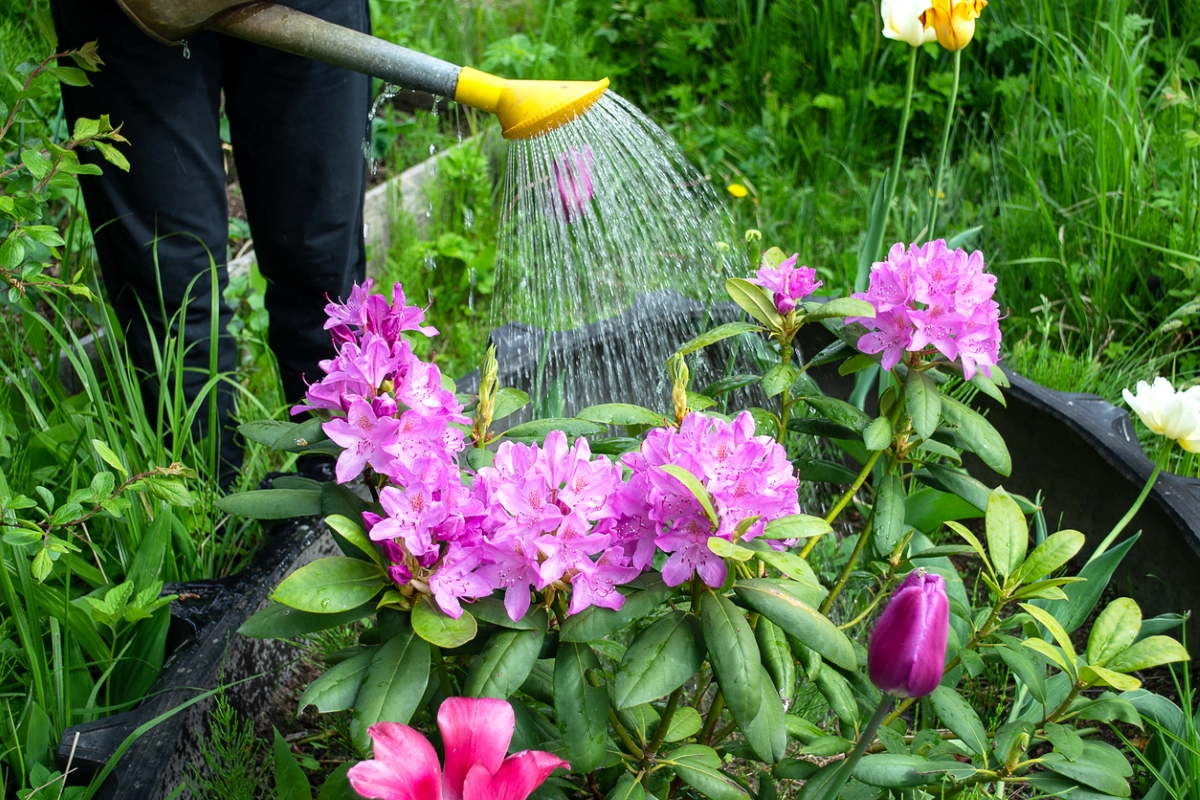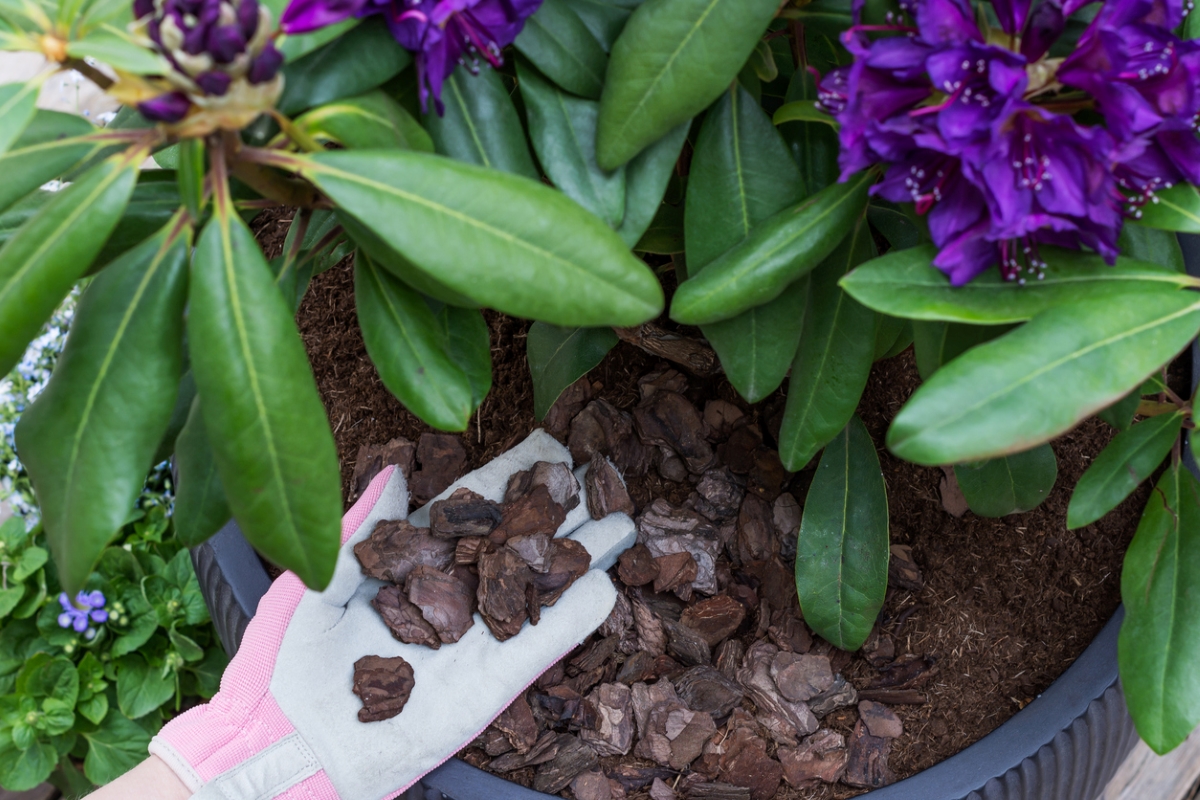We may earn revenue from the products available on this page and participate in affiliate programs. Learn More ›
Rhododendrons are easy and highly popular in zones where they grow well. However, in other areas they can be a headache since they tend to scorch under adverse conditions. To prevent rosebays from giving you Bayer moments, you just need to know what they need.
Keep in mind that azaleas also fall into this genus. As the American Rhododendron Society (ARS) puts it, “All azaleas are rhododendrons, but not all rhododendrons are azaleas.” You’ll want to consult our article on azalea care for those shrubs, while this one will concentrate on similar rhododendron care for both “true rhododendron” and tropical vireya species.
Growing Rhododendron at a Glance
Common Name: Rhododendron, rosebay
Scientific Name: Rhododendron spp.
Hardiness Zone: Varies from 4 to 12
Soil: Well draining, rich in humus
Light: Dappled sun or partial sun
Water: Medium
Food: Fertilizer for acid-loving plants
Propagation: Stem cuttings
Safety: Toxic
Rhododendron Characteristics

Like many low-maintenance evergreen shrubs, rhododendron bushes typically grow about 4 to 6 feet tall. They have leathery 3- to 6-inch leaves. However, their size can vary from that of a dwarf such as the 1½ foot Ginny Gee to wild rhododendron trees surpassing 80 feet tall. And, according to The Plant Book, edited by Susan Page and Margaret Olds, “Many of the alpines have tiny leaves under 1 inch long, while the foliage of species from mild, high rainfall areas can exceed 24 inches long.”
Flowering rhododendron bushes make trusses (clusters) of hummingbird-attracting blooms at the tips of their branches. These are sometimes a bit more bell-shaped than azaleas’ trumpet-shaped ones and vary from thimble size to 8 inches long. In climates with harsh winters, blooms typically appear in late spring or early summer. However, tropical vireya cultivars typically flower most heavily from autumn through spring.
Recommended Rhododendron Varieties
- Rhododendron catawbiense ‘Roseum Elegans’: This popular variety grows to 8 feet in USDA Zones 4 through 8 with rose-colored blooms in late spring.
- Rhododendron ‘Frank Galsworthy’: Dark and handsome, this cultivar offers purple blooms with a gold splotch and grows to 4 feet in USDA Zones 6b to 8b.
- Rhododendron ‘Nova Zembla’: Meaning “new land,” this “ironclad” rhododendron grows to 8 feet high in USDA Zones 4 through 8 and offers red blooms with darker spotting—as well as an iron constitution.
Planting Rhododendrons

If your soil is heavy clay, consider planting a rhododendron atop a raised bed or mound of soil that is loose, which means plenty of air flows through to support growth of healthy microbes. The soil also should have an acidic pH and contain lots of organic matter (humus) to help retain moisture.
When is the best time to plant rhododendrons?
The American Rhododendron Society recommends early spring planting for colder northern zones, with early fall planting being second best. However, fall planting is the top choice for southern zones, though the ARS site notes “In mild climates rhododendrons…can be planted almost any time of the year.”
Where can rhododendrons grow?
Choose a location that receives just dappled or morning sun and has moist but well-draining soil with a pH between 4.5 and 6. Include rhododendrons among shrubs for the front of the house only if you can locate them on the north or east side of the structure. Avoid placing the shrubs near pH-raising concrete.
How do you plant rhododendrons?
Before planting a rhododendron, remove any covering from its root ball except for biodegradable burlap. Leave the burlap on until the shrub is set into the planting hole and open it up.
- If the plant is root-bound, use a sharp knife to cut vertical slits in the mass of roots.
- Dig a hole a couple of inches shallower than that root ball.
- Place the root ball in the hole and backfill so that the shrub sits with its crown a couple of inches above ground level.
Can you grow rhododendrons in containers?
Epiphytic vireyas make excellent tropical houseplants in zones where they aren’t hardy. Use white 6-inch pots to keep their roots cool and pot them in a mix similar to that preferred by orchids. Specifically, Richard Chaikin of ARS recommends “40 percent coarse perlite, 40 percent conifer bark mini-nuggets, and 20 percent coarse peat moss.” As with other rhododendrons, the potted vireyas should receive only dappled sun or morning sun when outdoors, unless described as tolerating full sun.
Watering Rhododendrons

Definitely not among the best plants for a drought-tolerant garden, rhododendron has fine, shallow roots and requires at least 1 inch of water per week. Its soil should remain slightly moist at all times. However, you might want to use a moisture meter to ensure that you haven’t gone from sufficiently saturated to the sogginess that can cause root rot.
It’s a good idea to mulch rhododendron with 2 inches or more of a coarse, acidic substance such as pine needles or oak leaves to help keep that soil damp and weed-free, since weeding also can damage the roots.
Fertilizing Rhododendron Plants
Since overuse of plant food may burn sensitive roots, rhododendron plant care does not include much fertilizing. Feed your rhododendron only once per year in the spring, just as color is beginning to show on the buds, with an organic fertilizer for acid-loving plants such as 4-3-4. Apply 1 cup for every foot of shrub branch width. Those who need to acidify the soil to lower its pH to what rhododendrons prefer can use wettable sulfur or ferrous sulfate rather than aluminum sulfate, as the latter can harm their roots.
Pruning Rhododendrons
Although the shrub doesn’t require much pruning, an important part of rhododendron plant care is deadheading, or removing each spent rhododendron flower. You should do that immediately after the plant has finished blooming, but be careful not to damage the growth buds just below each cluster of flowers. If you need to cut the shrub back, do that soon after it finishes blooming as well. If you wait until later in the summer, you are likely to remove buds already formed for the following year.
Propagating Rhododendron Plants
Take cuttings from branch tips on a morning in early autumn, cutting tips short enough that they have only one whorl of leaves at the top and a leaf node at the bottom. Trim the leaves back by half and remove a ½-inch-long vertical sliver of bark from the base on either side of each cutting.
After dipping those bases in liquid rooting hormone, pot the cuttings in a damp sphagnum moss/perlite mix. Cover the pot with an inverted plastic bag and keep it at 70 degrees Fahrenheit in bright, indirect light until the cuttings root in 3 or 4 months.
Safety Considerations
Because it contains two different toxins (andromedotoxin and grayanotoxin), a rhododendron shrub is poisonous to both people and animals. According to the American Society for the Prevention of Cruelty to Animals (ASPCA), it can cause “vomiting, diarrhea, hypersalivation, weakness, coma, hypotension, CNS depression, cardiovascular collapse, and death” in pets and livestock.
As for people, Poison Control notes that “Serious poisoning is unlikely when small pieces of azalea or rhododendron are swallowed. But swallowing large amounts of any part of the plant or honey made from these flowering plants can cause life-threatening symptoms.” That “mad” honey might dangerously lower your blood pressure and slow your heart rate.
Potential Pests and Diseases

The leaves of the rhododendron bush often will curl up as a response to freezing temperatures. This is natural, and the plant usually will unfurl its foliage once temperatures rise again.
A more permanent leaf scorch may be caused by too much sun or wind or too little water. Care for a rhododendron shrub should begin at planting time by making sure the shrub occupies a sheltered position. It should receive only partial sun even in winter and be mulched heavily enough to retain moisture in its soil.
Preparing Rhododendrons for Winter
An important part of caring for rhododendron is making sure it is ready for winter. It can become dehydrated during the season because of more sun (due to deciduous trees dropping their leaves) and less moisture (due to frozen ground). It’s a good idea, therefore, to give your rhododendron a deep drink for Thanksgiving and make sure that it is well mulched to keep its soil moist. You also might want to apply an antidessicant to your plant’s leaves at the same time, while daytime temperatures still are above the freezing mark. The coating will help reduce moisture loss through the leaves.
Looking for more shade-loving shrubs? Check out our guides on growing azaleas, gardenias, and hydrangeas.


